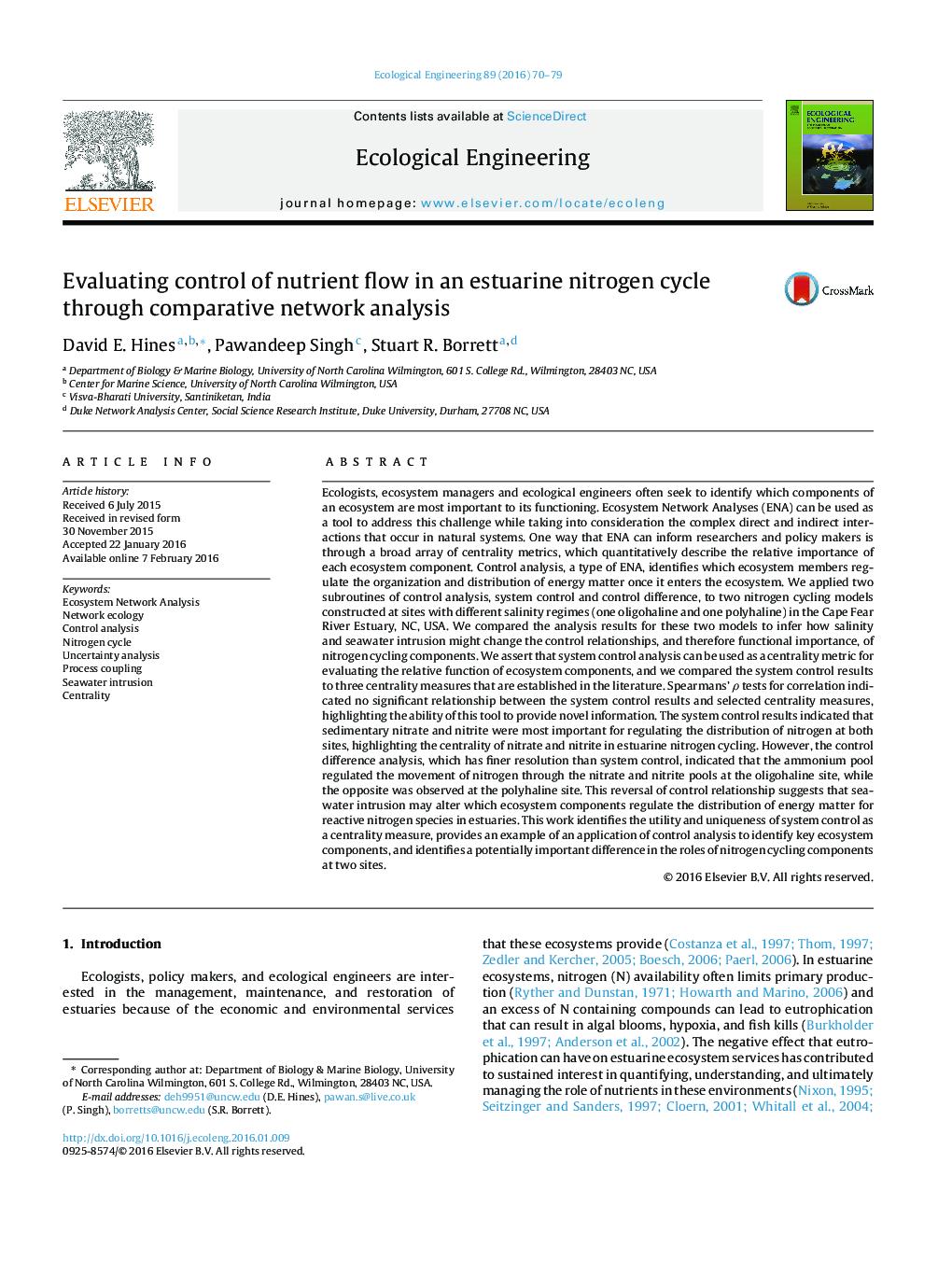| Article ID | Journal | Published Year | Pages | File Type |
|---|---|---|---|---|
| 4388749 | Ecological Engineering | 2016 | 10 Pages |
Abstract
Ecologists, ecosystem managers and ecological engineers often seek to identify which components of an ecosystem are most important to its functioning. Ecosystem Network Analyses (ENA) can be used as a tool to address this challenge while taking into consideration the complex direct and indirect interactions that occur in natural systems. One way that ENA can inform researchers and policy makers is through a broad array of centrality metrics, which quantitatively describe the relative importance of each ecosystem component. Control analysis, a type of ENA, identifies which ecosystem members regulate the organization and distribution of energy matter once it enters the ecosystem. We applied two subroutines of control analysis, system control and control difference, to two nitrogen cycling models constructed at sites with different salinity regimes (one oligohaline and one polyhaline) in the Cape Fear River Estuary, NC, USA. We compared the analysis results for these two models to infer how salinity and seawater intrusion might change the control relationships, and therefore functional importance, of nitrogen cycling components. We assert that system control analysis can be used as a centrality metric for evaluating the relative function of ecosystem components, and we compared the system control results to three centrality measures that are established in the literature. Spearmans' Ï tests for correlation indicated no significant relationship between the system control results and selected centrality measures, highlighting the ability of this tool to provide novel information. The system control results indicated that sedimentary nitrate and nitrite were most important for regulating the distribution of nitrogen at both sites, highlighting the centrality of nitrate and nitrite in estuarine nitrogen cycling. However, the control difference analysis, which has finer resolution than system control, indicated that the ammonium pool regulated the movement of nitrogen through the nitrate and nitrite pools at the oligohaline site, while the opposite was observed at the polyhaline site. This reversal of control relationship suggests that seawater intrusion may alter which ecosystem components regulate the distribution of energy matter for reactive nitrogen species in estuaries. This work identifies the utility and uniqueness of system control as a centrality measure, provides an example of an application of control analysis to identify key ecosystem components, and identifies a potentially important difference in the roles of nitrogen cycling components at two sites.
Keywords
Related Topics
Life Sciences
Agricultural and Biological Sciences
Ecology, Evolution, Behavior and Systematics
Authors
David E. Hines, Pawandeep Singh, Stuart R. Borrett,
